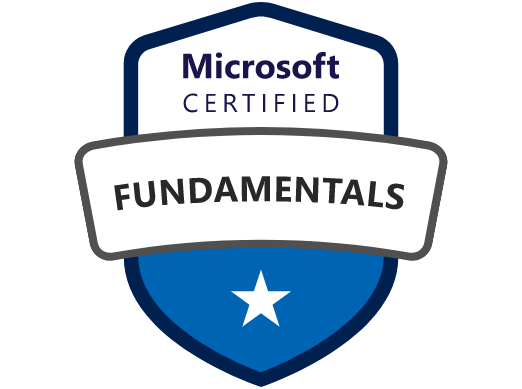
SC-900: Microsoft Security, Compliance, and Identity Fundamentals
Prepare to pass the SC-900: Microsoft Security, Compliance, and Identity Fundamentals Certification Exam

Course Description
This course provides foundational level knowledge on security, compliance, and identity concepts and related cloud-based Microsoft solutions.
Audience Profile
The audience for this course is looking to familiarize themselves with the fundamentals of security, compliance, and identity (SCI) across cloud-based and related Microsoft services. The content for this course aligns to the SC-900 exam objective domain. Candidates should be familiar with Microsoft Azure and Microsoft 365 and understand how Microsoft security, compliance, and identity solutions can span across these solution areas to provide a holistic and end-to-end solution. Before attending this course, students must have:
- General understanding of networking and cloud computing concepts.
- General IT knowledge or any general experience working in an IT environment.
- General understanding of Microsoft Azure and Microsoft 365.
What Will You Learn?
Course Outline
Skills at a glance
-
Describe the concepts of security, compliance, and identity (10–15%)
-
Describe the capabilities of Microsoft Entra (25–30%)
-
Describe the capabilities of Microsoft security solutions (35–40%)
-
Describe the capabilities of Microsoft compliance solutions (20–25%)
-
Describe the shared responsibility model
-
Describe defense-in-depth
-
Describe the Zero Trust model
-
Describe encryption and hashing
-
Describe Governance, Risk, and Compliance (GRC) concepts
-
Define identity as the primary security perimeter
-
Define authentication
-
Define authorization
-
Describe identity providers
-
Describe the concept of directory services and Active Directory
-
Describe the concept of federation
-
Describe Microsoft Entra ID
-
Describe types of identities
-
Describe hybrid identity
-
Describe the authentication methods
-
Describe multi-factor authentication (MFA)
-
Describe password protection and management capabilities
-
Describe Conditional Access
-
Describe Microsoft Entra roles and role-based access control (RBAC)
-
Describe Microsoft Entra ID Governance
-
Describe access reviews
-
Describe the capabilities of Microsoft Entra Privileged Identity Management
-
Describe Entra ID Protection
-
Describe Microsoft Entra Permissions Management
-
Describe Azure distributed denial-of-service (DDoS) Protection
-
Describe Azure Firewall
-
Describe Web Application Firewall (WAF)
-
Describe network segmentation with Azure virtual networks
-
Describe network security groups (NSGs)
-
Describe Azure Bastion
-
Describe Azure Key Vault
-
Describe Microsoft Defender for Cloud
-
Describe Cloud Security Posture Management (CSPM)
-
Describe how security policies and initiatives improve the cloud security posture
-
Describe enhanced security features provided by cloud workload protection
-
Define the concepts of security information and event management (SIEM) and security orchestration automated response (SOAR)
-
Describe threat detection and mitigation capabilities in Microsoft Sentinel
-
Describe Microsoft Defender XDR services
-
Describe Microsoft Defender for Office 365
-
Describe Microsoft Defender for Endpoint
-
Describe Microsoft Defender for Cloud Apps
-
Describe Microsoft Defender for Identity
-
Describe Microsoft Defender Vulnerability Management
-
Describe Microsoft Defender Threat Intelligence (Defender TI)
-
Describe the Microsoft Defender portal
-
Describe the Service Trust Portal offerings
-
Describe the privacy principles of Microsoft
-
Describe Microsoft Priva
-
Describe the Microsoft Purview compliance portal
-
Describe Compliance Manager
-
Describe the uses and benefits of compliance score
Describe information protection, data lifecycle management, and data governance capabilities of Microsoft Purview
-
Describe the data classification capabilities
-
Describe the benefits of Content explorer and Activity explorer
-
Describe sensitivity labels and sensitivity label policies
-
Describe data loss prevention (DLP)
-
Describe records management
-
Describe retention policies, retention labels, and retention label policies
-
Describe unified data governance solutions in Microsoft Purview
-
Describe insider risk management
-
Describe eDiscovery solutions in Microsoft Purview
-
Describe audit solutions in Microsoft Purview
Duration
1 Day